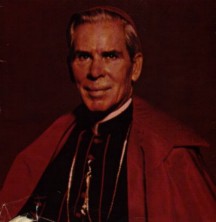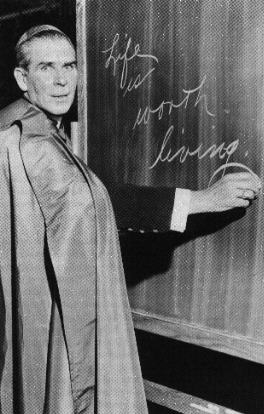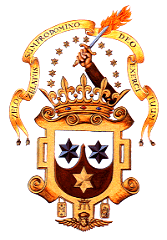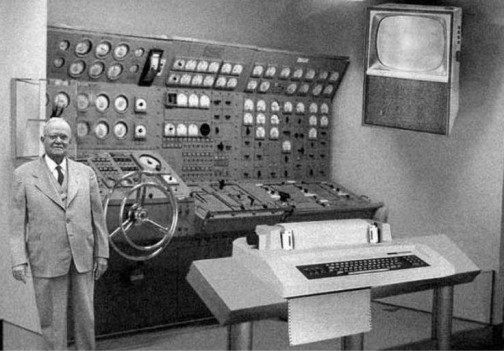|
no. 1 january - march 2005 How Modern Means of Communication Can Assist a Contemplative Community To communicate is not an easy task even with our technology. To communicate means to enter into union with someone and this goal has its roots in the very life of God. The human being has been made capable of dialogue, of entering into relationship and of giving himself or herself to another. To communicate means not to put up barriers against others. The one who chooses to live the contemplative life does not seek to distance herself from others. She enters into the world in a new way where she learns new ways to dialogue. The contemplative cannot afford to disdain the modern means of communication. There is something within that pushes her outwards. Jesus went in search of people and did not erect fences. He ate with sinners. Communities of contemplative life do not physically go in search of people but they meet others by means of their prayer. The contemplative life has its rhythm of prayer and work, community and solitude. The time that one dedicates to external communication through the telephone, by post, in the parlour or by means of the internet, is small but intense. It is a matter of the heart because one touches the life of another. Often our words are empty and do not have an effect. The Word of God is not only "words" but "deeds" (cf. Gen 1,3.7). When the human being truly listens to the transcendent, something profound takes place. All the prophets spoke the Word of God by means of their own words, having had their lips purified (Is. 6,5-8; Jer. 1,4-10). The work of each contemplative is to be a prophet and so speak in the name of God and communicate God’s message. The means of communication offer the possibility to meet another. Unable to go into the streets and squares, nuns can enter those crowded corners of solitude that make up the world of multimedia. We can offer a word of hope and share the bread of desolation in the presence of the one Lord who saves all freely. Being able to use the modern means of communication is a notable enrichment for the consecrated life and is a stimulus not to lose ourselves in the little details of our life. The person who is seeking to make sense of life and who knocks on the monastery door, makes sure that the vigilance of the community does not lessen and that those hearts, burned with love, are ready for the return of the Lord in every person who seeks help. Each community needs to grow in its awareness of the modern means of communication. Those who have chosen to consecrate themselves to God in silence and solitude in order to become a living word of Christ cannot accept the challenge of communication through silence unless it takes place through images and written words. The ways of deep communication start off from a place of silence and not absence. This silence is an " interior approach, a depth and a fullness, a peaceful flowing together of a secret life." The internet is already considered the areopagus of modern times. It is not too much to suggest that the internet is a new road to God. The internet bring the poor to our homes. They are the poor with empty and suffering hearts, lacerated by desperation, who have lost their way and seek peace. "What I say to you in the darkness, pronounce it in the light, and what you hear whispered, proclaim it from the rooftops." (Mt. 10, 27)
by Sr M. Teresa della Croce French Delegation Focuses on Center of Carmelite Spirituality The Center for the Study of the History of Spirituality (CEHS) of the French Delegation began in 1994, under the leadership of Fr. Otger Steggink, with the opening of the house library open to the public. In 1999, the new director, Romero de Lima Gouvea, further developed the library into a center for studies. The scope of the CEHS is to: promote the study of history, of spirituality, and of Christian mysticism with particular attention to the French Carmelite tradition. Activities conducted by the CEHS are: 1) Publications The Center publishes a book a year as part of the series "Grands Carmes" through the publishing house "Parole et Silence". The first two volumes are "Itinéraire spirituel du Carmel" of Titus Brandsma and "La Règle du Carmel" by Bruno Secondin. The center also publishes an annual magazine "Mélanges carmélitains." The third issue of this magazine is in preparation. 2) Courses The Center organizes three courses a year which are open to anyone. The courses are given by the Carmelites or by the lay people who work with the CEHS. Some of the courses that have already been given include: "Lectio Divina," "To Pray with St. Thérèse of Lisieux," "St. Francis di Sales," "The Apparitions of the Virgin Mary Throughout History," "The Miraculous in History," and "Jesus Christ in the Faith of the Church." 3) Conferences These conferences are also given by the Carmelties or by invited guests. They have a wide range of themes. For example "The Feminine Mystic in the 20 th Century," "The Cultural and Religious Transformations in the Renaissance," "Mary Magdalene de’ Pazzi and Thérèse of the Child Jesus."4) The Library This was the starting point of the CEHS and remains a key activity in the Center. The library specializes in spirituality but also contains resourses in other areas so that it can be a complete resource for the researcher. "It is noted that the CEHS and its library are under utilized by those outside the French Delegation. We invite others to consider visiting," said Ives Beaupere, O. Carm., the current director.
Used power of new medium to reach millions for the faith in 1950s The movement to have Archbishop Fulton Sheen beatified in the Church is growing. The story of his sanctity is gaining momentum through the use of the modern means of communications, appropriate for a man who used the new communications of his own day to become one of the most effective evangelizers in recent times. And he was a member of the Carmelite Third Order. According to the PCM Province, Archbishop Sheen was received into the Third Order by Fr. Marcellus Scheuer, O. Carm. at Whitefriars Hall in Washington, DC. Fr. Schauer had been a doctoral student in philosophy at Catholic University of America in DC and Fulton Sheen was the director of his dissertation. Archibishop Sheen maintained some contact with Carmelites over the years. He preached in Whitefriars Street Church in Dublin, Ireland for the centenary of the birth of St. Thérèse of Lisieux in 1973.
Sheen is perhaps best remembered for his evangelization over a new medium at the time— television. The half-hour programs began life in February 1952 on a small, new network opposite programs with two of the biggest American stars at the time, comedian Milton Berle and singer-actor Frank Sinatra. Sheen took the country by storm, winning national awards for the program. Sheen’s humor, charm, intelligence, and considerable acting skill radiated throughout the program, captivating millions eager to hear Christian answers to life’s common problems. This was all accomplished in a studio with a desk, a few chairs, some books and a blackboard. The television series ended in 1957. These shows are now available on tape. He died in 1979 at the age of 84. For more information of this Third Order Carmelite’s cause, please contact V. Rev. J. Linus Ryan, O. Carm., the Foundation Promotor of the Cause in Ireland. Email: sttheres@indigo.ie or go to the website at www.sttherese.com
Each year, on January 20th, the anniversary of his death, the Committee for Venerable Angelo Paoli organizes a Eucharistic celebration in the parish of his birthplace in northern Italy. After the celebration in 2005, presided by the Bishop of the Diocese of Massa Carrara-Pontremoli, Bishop Eugenio Binini, a statue of the Venerable was unveiled. Besides Carmelites, many priests and civil authorities of the region were present. Venerable Angelo Paoli entered Carmel in 1660. He was noted for his love for the poor. In San Martino ai Monti in Rome he became known as "The Father of the Poor." His process towards beatification is going forward. (CITOC photo)
The internet has become very much a world wide web of information and which has the potential to reach into the lives of every man, woman and child on the planet. This is only curtailed by the presence of technology around the globe but even the most remote parts are now being linked to and by this amazing tool whether people are sitting at their desk, in the middle of the Atlantic, or half way up Mount Everest! The Irish Province website (www.carmelites.ie) was re-launched in its current format in August 2001 and since then has gone from strength to strength. The site has many categories such as Spirituality, a History of the Order in Ireland, our presence in Ireland today, prayer, Carmelite Saints & Blesseds, etc. The site has an important pastoral aspect in that visitors are able to email a Prayer Request to the webmaster. These requests are many and varied and each one receives a personal reply. A number of people have emailed back to say how reassuring it is to know that somebody is there praying for them and their loved ones, or when prayers have been answered and they wish to update us of a situation. Visitors may also request a Brown Scapular and a Prayer Card. These are sent the following day along with a signed ‘with compliments’ slip and a bookmark. To date these have gone as far as Indonesia, the former Yugoslavia, Singapore, Africa, Japan and South America, not to mention most of Europe, North America and Canada. In the last year we have also received requests to use our articles in various newsletters and bulletins in the United States and Australia – proof that the site is being read around the world and that its contents are having an impact on people.The initial setup takes a little bit of work but depending on the program used it can be as easy as typing a letter in MS Word. A little thought needs to go into how the site will be laid out but all of this can be tweaked and changed as time goes on. Our site currently has 315 text files (roughly 890 A4 pages) and 640 photographs and images. An important factor in all of this is cost. However, our website is maintained by one Carmelite – a secondary school teacher with no formal training in computer technology and certainly not in website design/maintenance – and so the financial cost per year for the site is about the cost of a decent laser printer. Now that the website is up and running it only takes about one hour a week to keep the whole thing ticking over smoothly with the odd bit of ‘over-time’ every four or five months. It’s also something fun as we create something which the whole world can look at. The website receives more than 25 visits a day and to date has received 1.1 million visits from more than 70 different countries and territories around the world. Our website has two counters monitoring the number of visitors the site gets each day. One of these counters provides the same service to 28,250 websites around the world. Within that we usually rank about 2000th in terms of popularity which is within the top 7% of all these websites. To put it another way, if all the New Catholic Encyclopaedias were to lie flat on top of each other in a pile – with Volume 1 at the top to represent the most popular – our website would be 5cm from the top of that pile. All of our First Year pupils in the secondary school must do a Carmelite Project as part of their Religion classes. In the past they used to do these with their own drawings and very little text. Nowadays they are able to put in good solid facts and brighten the whole project up with colour pictures of our saints, of our original monastery on Mount Carmel and our current ministries. We have a rich heritage not just in Ireland but in all our provinces and ministries throughout the world. A website has the potential to bring that heritage to people who may not otherwise ever hear about us or our spirituality or ever see a real live Carmelite in the flesh. With so many people – especially young people – now using the internet on a daily basis, this is an opportunity which cannot be missed. There is no limit to the potential of the internet or to the extent to which we can bring the Good News to the world. The potential is only limited by our willingness to try.
|
||
|
RETURN TO THE INDEX FOR 2005 | RETURN TO THE INDEX FOR THIS ISSUE INDEX OF CARMELITE
WEBSITES |

 When Sheen was first ordained, he adopted some of the evangelization
techniques then popular with protestant Christianity in the United States.
One method he employed early on was "Street Preaching." Inviting anyone to
pose a question which the young Catholic priest promised to answer allowed
him to use his formidable debating skills.
When Sheen was first ordained, he adopted some of the evangelization
techniques then popular with protestant Christianity in the United States.
One method he employed early on was "Street Preaching." Inviting anyone to
pose a question which the young Catholic priest promised to answer allowed
him to use his formidable debating skills.

